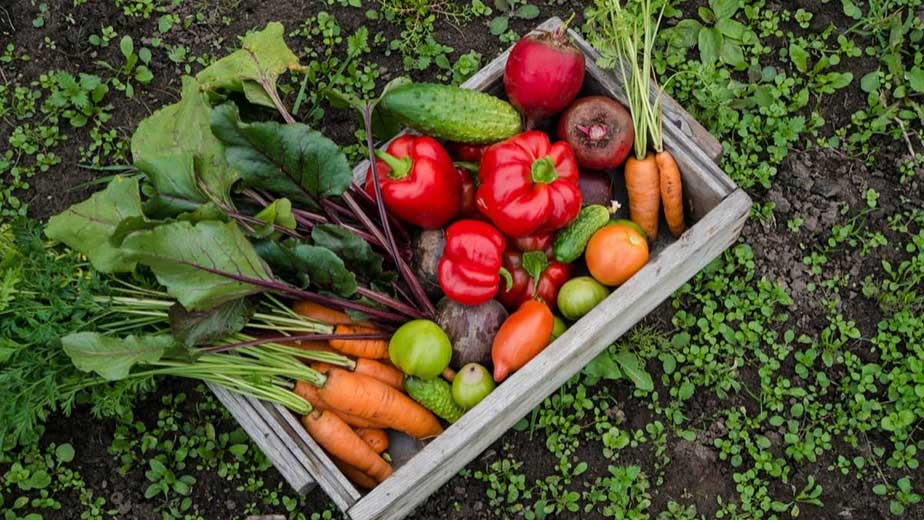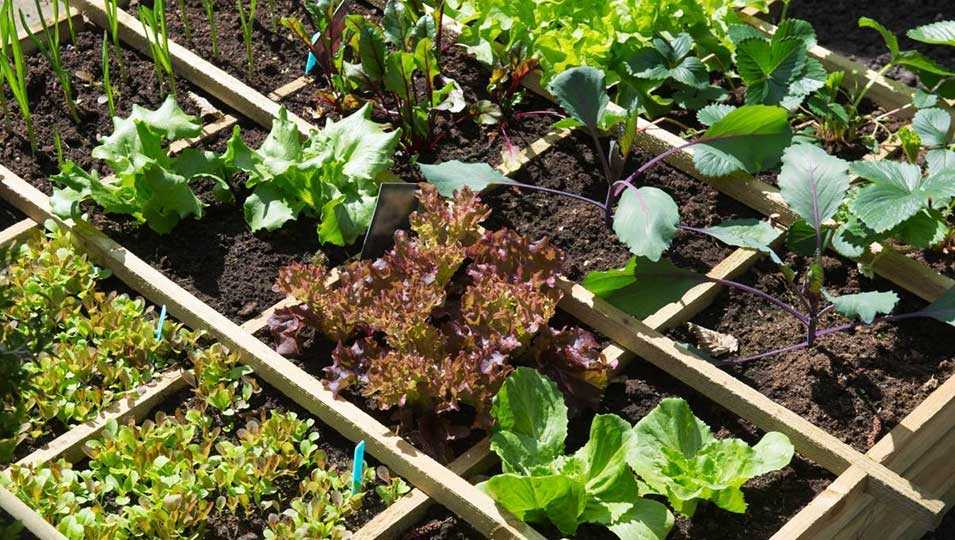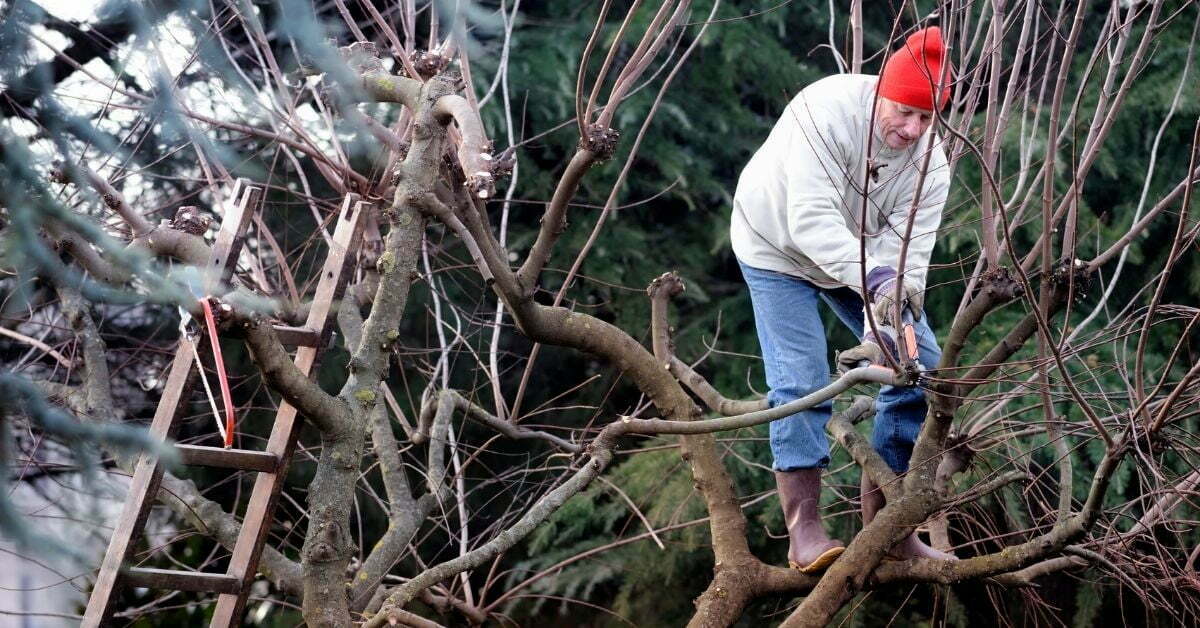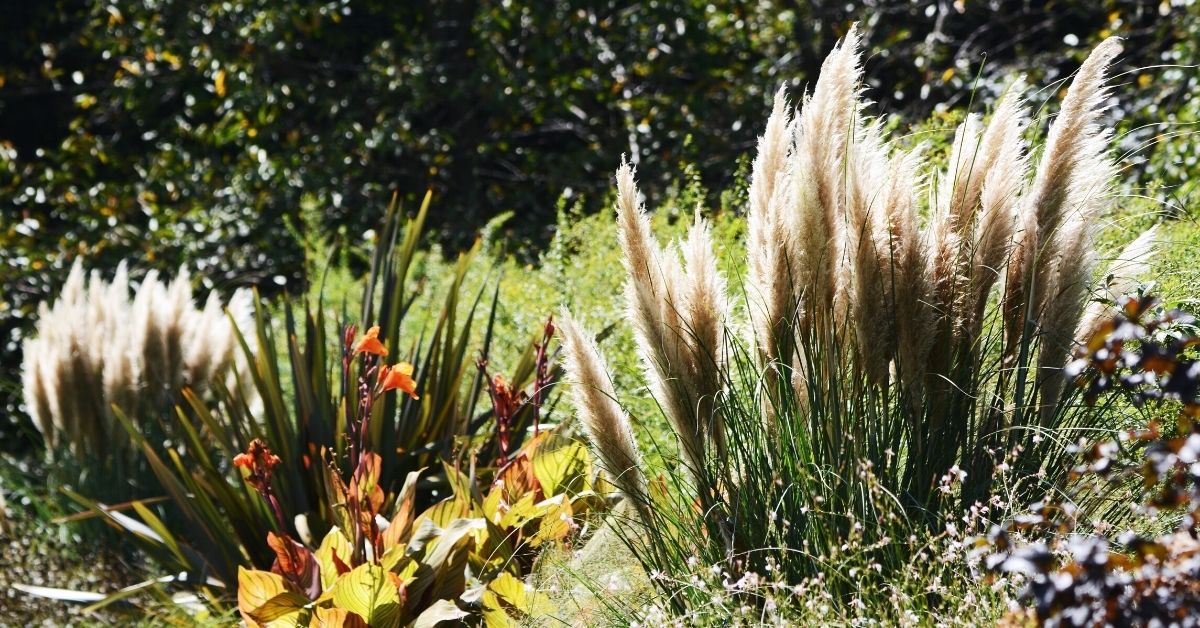Vegetable gardening is fun and very rewarding. Gardeners choose the specific types of vegetables they want to grow. Today, it’s possible to grow vegetables in pots, indoors and outdoors, in various decorative gardens that appeal to the senses, and here I’ll explain how to start a vegetable garden from scratch, for beginners.
The first tip for beginners is to learn as much about soil, water, and fertilizer as possible before taking a spade to the soil. Learn the specific planting “zone” of your location.
How to Start a Vegetable Garden From Scratch
In the USA, there are six planting zones from coldest to warmest climates. The next thing to study is the growth cycles of vegetables to be grown in your garden. For example, cabbage can be started in late winter in colder zones without any problems, should late spring snow occur. On the other hand, Tomatoes require warm soil and should be started indoors in starter kits and planted one week after the last frost.
Keep color in mind when you create a vegetable garden. For the most part, seedlings begin with bright green colors. Once growing is in full bloom, vegetables like rhubarb and red leaf lettuce add bright scarlet to the vegetable garden and grow to deep purple as they ripen for picking. Set aside one part of a garden for herbs. There’s nothing like fresh basil, oregano, marjoram, thyme, or sage, dried or fresh in recipes.

How to Grow Vegetables Indoors
Indoor vegetable gardens flourish when there is plenty of sunlight and when sunlight can be modified as needed. Peppers, tomatoes, cucumbers, radishes, and celery can all be grown indoors in pots. When growing vegetables in pots, be mindful that some vegetables have long, expanding roots. These vegetables will require deep, wide pots.
Make the indoor garden an attractive part of a room by choosing color-coordinated pots and placing them in a symmetrical order nearest sunlight. For example, tomatoes and peppers prefer at least six hours of bright, warm sunlight.
Children love to help grow root vegetables like potatoes and yams. These need wide pots and good, fertile potting soil to take root. One tip is to have the kids remove the “eyes” from potatoes and root tendrils from yams and plant them. They’ll love watching these turn into leaves above the soil. When they are fully grown, they can pull them out of the soil and bake them. These are the easiest vegetables to grow indoors.
Water indoor vegetable gardens only when the soil is dry to the touch. It’s accessible to over-water vegetables in pots. This will result in rotted roots that are signified by yellowing leaves. Don’t forget to mist indoor vegetables once they begin to show foliage. Indoor dust can play havoc with vegetable growth. Once a month, give the soil around the vegetable plants a light “raking” with an indoor plant rake.
How to Grow Vegetables Outdoors
Growing your own food is a wonderful exercise in self-reliance. When learning how to grow vegetables outdoors, it’s important to choose a good, sunny location and fertile potting soil.
Vegetables can be grown outdoors in pots or decorative vegetable gardens. Consider space when choosing your garden location. Don’t worry if space is limited. There’s an answer for the lack of space that’s quite useful: Design a vegetable garden with layers. This can be a circle, square, round, octagon, or pentagon shape, depending on the actual size and space available. Most vegetables are planted in long, flat, rectangle-shaped locations. This is fine when space is plentiful.
To make a layered vegetable garden, begin by measuring the size and shape of the space for planting. Invest in vinyl garden borders or rolls of metal edging that are at least four inches high. The foundation layer of soil is the most critical part of this type of garden. Make sure the foundation is level. Begin the next layer at least four inches from the edge of the foundation. This will give vegetables plenty of growing room. Follow this with the third and fourth layers. Each layer of soil should be sturdy enough to hold the layer above it.
Choose vegetables for the first layer like lettuce, tomatoes, or peppers. Vine-type vegetables like squash and cucumbers can be planted on the second lower level. This allows for overhang onto the first level if necessary. For the third level, choose radishes, onions, or carrots. For the fourth level, select veggies that grow more in height than widths, like celery, spinach, kale, and broccoli. Asparagus takes one year before plants produce a crop.
The result of planning this design is a lovely garden that has color, depth, and shape. The idea with a layered vegetable garden is to utilize limited garden space to maximum advantage. The choice of vegetables in each layer depends mainly on the design. Be aware that vegetables in a layered garden should receive equal amounts of sunlight. Avoid planting taller vegetables where they might obscure vegetables that are shorter in height.

The Formal Vegetable Garden
For those lucky enough to have unlimited garden space, a formal rectangular-shaped garden can be a crowning glory in terms of the volume of fresh, ripened produce it will yield. It’s fun to grow corn, peas, string beans, pumpkin, onions, tomatoes, peppers, and lots of greens of varying species in a formal garden.
Soil should be turned in late in spring or as soon as the soil is workable. Lime or mild fertilizer can be added at this point to help the soil become rich enough for planting. Always turn soil after adding fertilizer. Then, allow the regular rain events to disperse the fertilizer.
Design a Formal Productive Garden
To design a formal garden, consider how it will look in full growth. This will help when planting taller crops of corn. Corn needs lots of space to grow. Plant these seeds at least ten inches apart in long rows in full sun.
Suppose other vegetables are to be planted in the formal garden, plant low-growing vegetables like potatoes, turnips, rutabaga, or yams in the next row. Then, proceed with planting greens like kale, kohlrabi, Collard Greens, Swiss chard, broccoli, celery, cabbage, and cauliflower. Plants like tomatoes and peppers also need room to grow.
Peas and string beans need some support once they begin to age. These should be planted in the last row of the garden. The best way to manage these types of plants is to set up bean “poles” or a complete frame—purchase five-foot-long, wood furring strips from the local lumber yard and several rolls of heavy string. Use a heavy-duty stapler or tack to attach the string to the wood securely. As string beans begin to grow long, attach vines to the frame. For smaller plantings of string beans, a single wood furring strip about five feet long is sufficient. Create a similar, small frame to help keep pumpkin, squash, peas, and cucumbers from laying in soil too long. With pumpkin, however, the weight of each pumpkin will determine the need for a supportive frame.
Fun with Vegetables
When vegetable lovers find themselves short of space for a garden, they can be quite ingenious and creative. For example, leafy vegetables can be planted along the foundation of a house. Allow six inches from the foundation for this type of vegetable garden. Cabbage and red leaf lettuce have been known to be planted as sidewalk borders. Consider a vacant spot that needs a little color. It might be perfect for growing a few vegetables or herbs.
Tips on Garden Tools
Gardeners who choose a large vegetable garden need heavy-duty tools at their convenience. A rototiller can turn garden soil much faster than a gardening hoe or fork. For small gardens, a tilling fork with two tines is sufficient. Weeding the garden is also essential to keep weeds from choking off vegetables.
For small gardens, a gardening shovel or weeding tool works well. Soil needs regularly aerating to allow it to “breathe” in oxygen that helps vegetables grow to their maximum quality. A gardening hose with a multiple spraying attachment is handy for most gardens. It might be more convenient for more extensive gardens to consider a sprinkling system or several large lawn sprinklers covering the widest areas of the garden. Spades and shovels may also be needed to dig out plants that become diseased. Check with your local garden center on the best types of potting soil, insect dust, and protective netting and fencing to keep predatory animals like deer, rabbits, and raccoons from eating vegetable plants.
Harvest Time
All the joy of a vegetable garden arrives with harvest time. Harvest time for vegetable crops depends on the species of plants. If they are planted indoors in starter kits in colder climates, allow three inches in height before transplanting with their starter soil. Plant outdoors in the soil at least four to six inches deep, depending on the type of vegetable. Most vegetable plants can be harvested in six to eight weeks. Then, harvest and enjoy!


